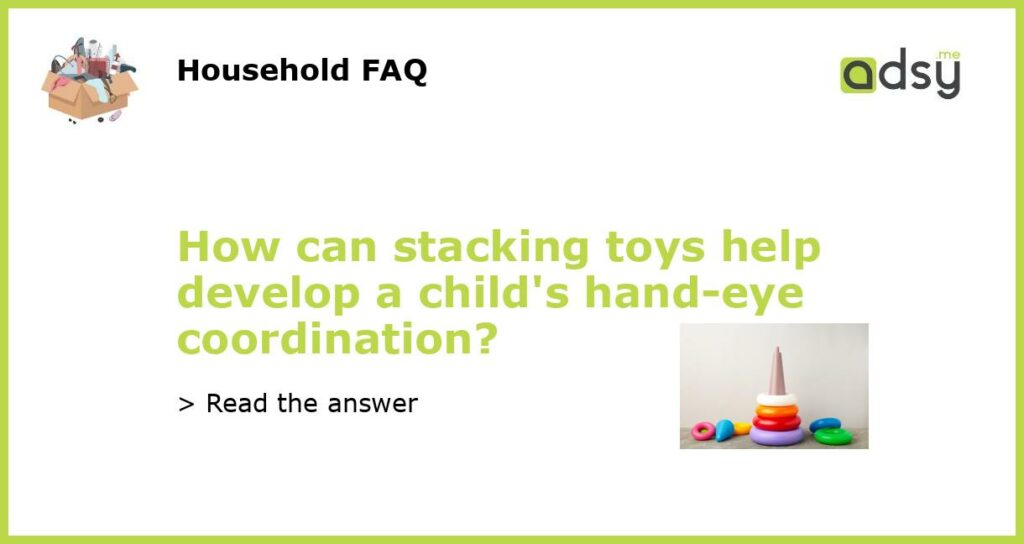What is hand-eye coordination?
Hand-eye coordination refers to the ability to synchronize hand movements with visual stimuli. It is a crucial skill that helps individuals perform tasks that require precise movements, such as writing, drawing, and playing sports. Developing hand-eye coordination is particularly important during childhood, as it lays the foundation for more complex skills later in life.
The role of stacking toys in developing hand-eye coordination
Stacking toys, such as blocks or rings, are excellent tools for promoting the development of hand-eye coordination in young children. These toys typically require children to grasp objects, align them, and place them on top of each other in a deliberate manner. By engaging in such activities, children improve their ability to use their eyes to guide their hand movements accurately.
Benefits of stacking toys
Stacking toys offer various benefits that contribute to the development of hand-eye coordination. First and foremost, they encourage children to use their hands in a purposeful way, as they need to manipulate objects to achieve a specific goal. The repeated practice of stacking objects also strengthens the muscles and fine motor skills in a child’s hands, making them more proficient in controlling their movements.
Furthermore, stacking toys help children develop spatial awareness. As they stack objects, they need to judge distances, angles, and proportions to ensure stable structures. This requires them to mentally plan and execute their actions, enhancing their ability to coordinate their hand movements with what they see.
Stacking toys and cognitive development
Aside from supporting the development of hand-eye coordination, stacking toys also contribute to a child’s cognitive development. When children engage in stacking activities, they learn about concepts such as size, weight, balance, and cause and effect. They gain an understanding of how different objects interact with each other and learn to make decisions based on visual feedback.
Stacking toys also foster creativity and problem-solving skills. Children are encouraged to experiment with different stacking techniques and explore various arrangements to achieve their desired structures. This promotes critical thinking and develops their ability to analyze, plan, and problem-solve.
Tips for using stacking toys effectively
While stacking toys are valuable tools for promoting hand-eye coordination, it is essential to use them effectively to maximize their benefits. Here are some tips:
- Start with simple stacking toys that are appropriate for your child’s age and skill level.
- Provide a variety of stacking objects, such as blocks, rings, or cups, to introduce different shapes, colors, and sizes.
- Encourage your child to explore and experiment freely with the stacking toys, allowing them to develop their own techniques and solutions.
- Provide verbal encouragement and praise to motivate your child and boost their confidence as they improve their hand-eye coordination.
- Join your child in stacking activities to make it a fun and interactive experience. This strengthens the bond between you and your child while enhancing their learning.






